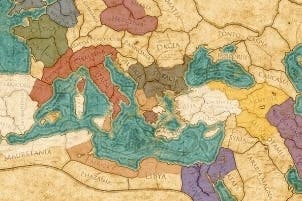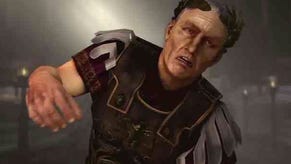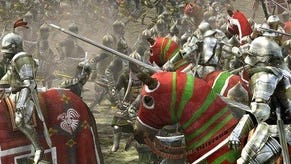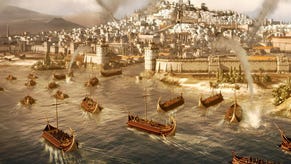Total War: Rome 2 review
Let slip the bugs of war.
In ancient times, when cartography was more art than science, a map was a portrait of an empire. An abstraction of its authority in which complexity and diversity were swallowed in one mass of colour, it was painted with an ease that belied the incalculable efforts demanded in swallowing such territory. It was a snapshot of the glory of a realm; a chance for it to puff itself up in front of its peers and coyly ask, "Do my borders look big in this?"
And much as the grand reach of Rome wasn't won in a day, neither are the empires of Total War: Rome 2. They spread slowly, oozing across the world like ink on parchment, though that ink is not quick to dry: borders must be defended, rebellions quelled and new territories pacified. Following in the footsteps of advancing armies walk the administrators and architects whose work will sustain these gains. All the while, the rest of the world nurtures its ambitions, with dozens upon dozens of warriors, spies and dignitaries dashing about the land when their turn comes. No, Total War: Rome 2 is not quick.
It is no great departure for the series and will immediately feel familiar to those who've served in previous Total Wars. A turn-based campaign map gives an overview of Europe, west Asia and north Africa, across which journey both armies and secret agents. When a player's army (or navy) meets an opposing force, the opportunity arises to take direct command of the action in a real-time battle.
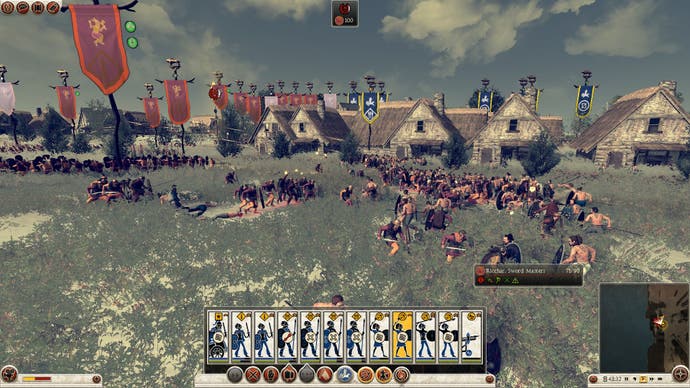
The first difference is in the scale. The Creative Assembly has made much of its effort to build a bigger, broader and better looking representation of the ancient world. The campaign map now stretches all the way to the fringes of India and is carefully decorated with forests, mountains and the monuments of the ancient world. African towns shimmer in the desert heat and northern forests sleep under thick mist. As cities expand, whole new quarters surge up out of the ground, bringing with them a temptation to glide the game's camera across continents while humming the Game of Thrones theme.
In battle, armies are formed of hundreds of individually realised soldiers, distinctive and discreet in their appearance and their behaviour. Battlefields are littered with detail, from ruined villages to bristling forests to splendid, shining cities of wide streets and towering monuments.
But it's not quite a beautiful vision of the past. While the sea shines in the sunlight and a thousand men charging into battle is quite the spectacle, there's a pallid, muted, almost pastel flavour to the game's palette. At times it can make scenery look flat and colours unpleasantly faded. That said, during one fight in snow-drenched Denmark, my battlefield assumed a grim, grey aspect that called to mind the desaturated battles of Saving Private Ryan. It might be an acquired taste, but I could get used to it.
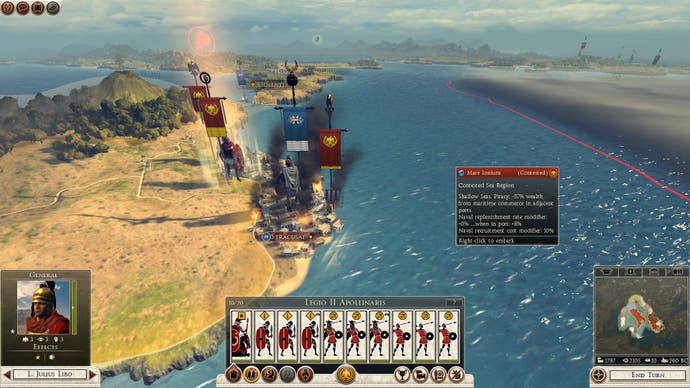
With a little time, more imperfections make themselves known. A merchant caravan journeying across the campaign map walks through rather than over a bridge. A spy who would usually board a boat instead steps into the sea and becomes a giant man striding through the water. Back on the battlefield, a ladder constructed in order for troops to scale a wall ends up poking right through a tower. Then a close zoom on a fight between a unit of chariots and elephants reveals that they have parked beside each other and seem to be engaged in a staring contest. I send in the cavalry, zoom a little more and, casual as anything, a floating horse glides sideways into the action.
The game has also had its AI revamped, and I'm pleased to report that it's somewhat cannier. While it was previously all too vulnerable to kiting - where entire armies could be distracted by one or two harassing units - it's now perhaps a little too stoic. It better recognises its advantage in defensive situations, standing firm when it knows it can hurt you, and it enjoys trying to wear your troops out by forcing you to make chase, by trying to keep your forces engaged and by attacking with fresh units. On occasion, it's a victim of its own stubbornness, with enemy defenders stood like mannequins in a mall, refusing to budge when their participation could swing a skirmish. Battles are fun, but still sometimes very dumb.
On the campaign map, it does worse, sometimes attacking with substantially smaller forces that have little hope of tasting victory. It will fail to press advantages or try to break sieges that it has a good chance of lifting. Tugging the difficulty slider up doesn't make it any more sensible, though it does at least make your own citizens increasingly fickle, raising the possibility of revolt at home.
I said that Total War: Rome 2 is a slow game and this comes in part from how mindfully you have to expand your would-be empire. The ancient world is made up of many different cultures and not all of these are keen to bend to your will, requiring particular technological advances and cooing dignitaries to placate them. At the same time, empires have hard limits on the number of agents, armies and fleets they can support, further tempering their growth.

The game's slow pace also comes from its size. Scores of factions are clashing across a map so busy that one historic hiccup could turn Rome itself into a forgotten footnote. As some of these factions grow in size, employing more spies and soldiers, you face long waits as they take their turns. Opting out of following enemy moves will mitigate this somewhat, but I still experienced some turns that had me waiting up to two minutes, even playing on a PC with a faster processor and twice as much memory as the recommended specs.
This is all the more of an issue when you only spend a few moments giving orders. Creative Assembly has substantially cut back on the amount of micromanagement involved in being an emperor, with a simplified system of city management that has you controlling provinces the size of a country, each with up to four cities in. These provinces behave as individual entities and it's much easier to understand what each of them provides at a glance.
Space within cities is strictly limited, so choosing what buildings to construct becomes critical, particularly when considering what possibilities you may unlock as your technology tree blooms. This is a smart simplification, but it does mean that you have little to do on some turns except nudge a few armies, and it can make the long wait between them a significant portion of your playing time.
Those technology trees are quite different for each of the playable factions and this presents some pleasing distinctions. Egyptian navies can enjoy cruel ramming bonuses, while cultural advances of the Celts improve public order. There's similar variety reflected in a huge unit roster, from camel infantry to Roman legions to woad-faced warriors, and each faction has its own random events. All of this helps to build a world that is varied, busy and exciting to experiment with.

Though the game will be instantly recognisable to players of the first Rome, The Creative Assembly has made a few additions, with varying degrees of success. Very welcome is the chance to issue instructions to your allies, which can have them attacking a mutual enemy in a particular location, while a new, detailed encyclopedia that covers just about everything in the game is much appreciated.
Less noteworthy is a system for allowing armies to gain traits, along with their leaders, as these offer some strangely stingy bonuses. This is a game that seriously asks you, after a series of victories, whether it's your archers or your infantry that you want to be 3% more dangerous. Naturally, a campaign of many decades presents the opportunity for multiple traits to stack and form more significant bonuses - but while the game's presenting you difficult choices in city management, these just look silly, making you feel like the pettiest of emperors.
By far the best change is found at sea. Ships fight in both naval and amphibious actions, beaching themselves to regurgitate great quantities of troops, or even shun the finer points of tactics and simply ram one another in great, splintering explosions. Unfortunately, this latter point means transports can be almost as deadly as warships, particularly when commanded by a human player, but in this case one of the game's little weaknesses is still damn good fun.
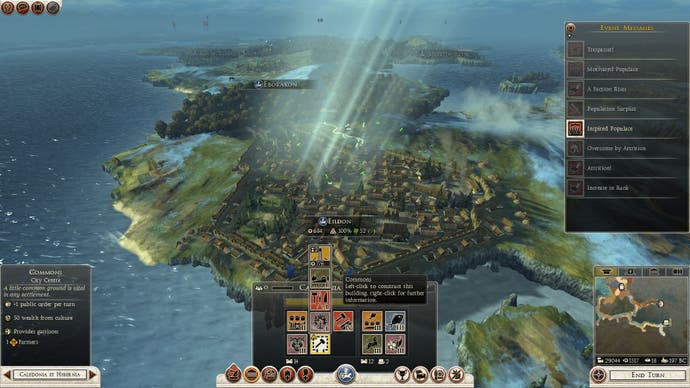
Total War: Rome 2's is a game dotted with little weaknesses. I wanted to begin this review by telling you of my attempt to spread a Roman and then an Egyptian empire around the Mediterranean like butter around a bagel, smooth, sweet and satisfying. But my experience has been more like spreading marmalade, as I try my best to work around the lumps. It's given me some unusual things to reflect upon.
I've seen glorious battles of thousands of men, but so too have I watched an enemy unit run circles around a victory point in what I assume was an attempt to prevent me holding it - a gambit that only resulted in ancient Rome's first Benny Hill sketch. I've trained an agent to the peak of his abilities, and yet his 95% chance of persuading an enemy to join my ranks never meets with success. I've seen missing textures. I've had start-of-turn notifications pop up mid turn. I've had units "stuck" to my mouse, unable to be deselected. Still, I can't deny I've enjoyed swallowing my neighbours, fattening my domain with conquest after conquest.
By themselves, none of the things that are wrong with Total War: Rome 2 are that big a deal. If the game itself were an empire, a map upon a wall, we'd note some gains and some losses, glossing over most of the tinier problems because they don't spoil the larger picture. We also might note the stagnation of that empire. For all that the game may have promised, it isn't such a big step forward for the series. It's Total War done a bit bigger, a bit better and a bit different. Its borders hold firm.
